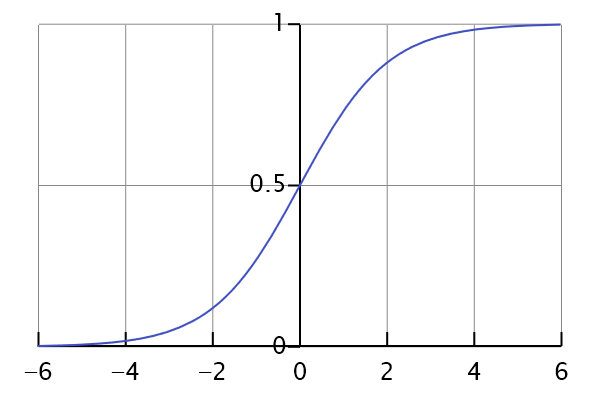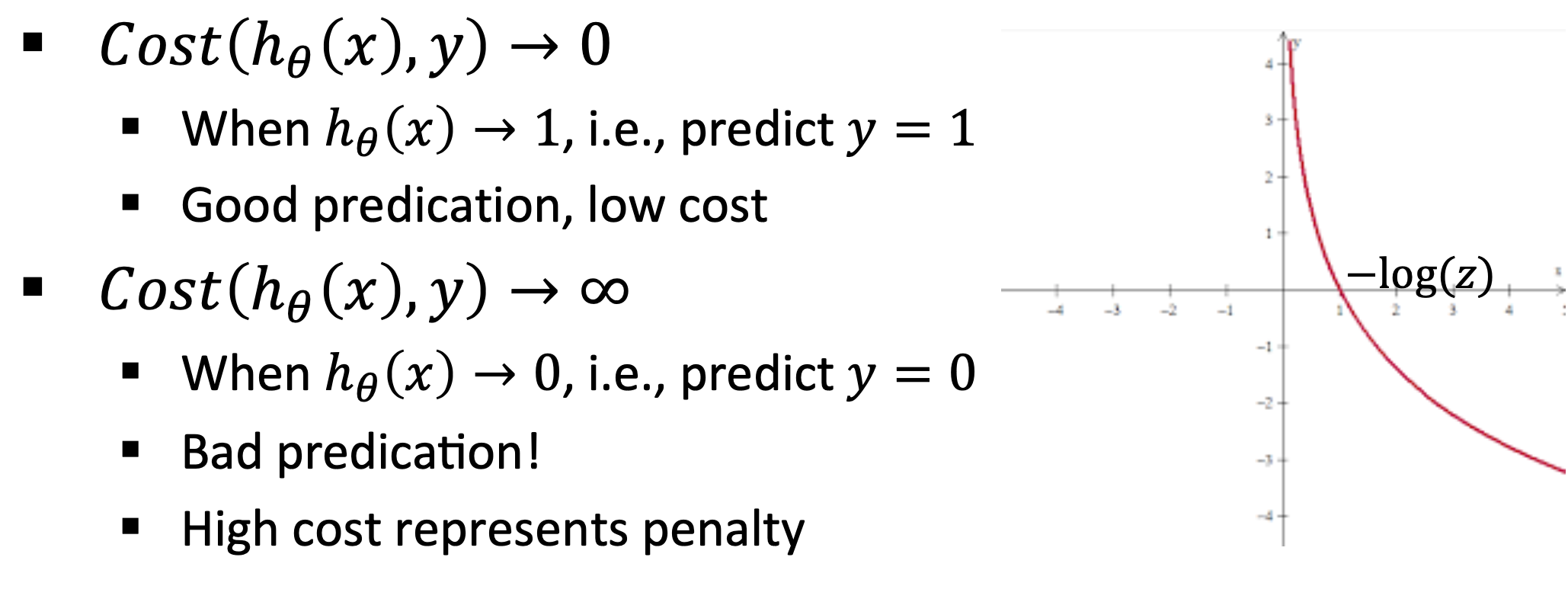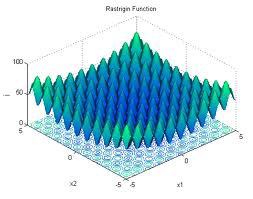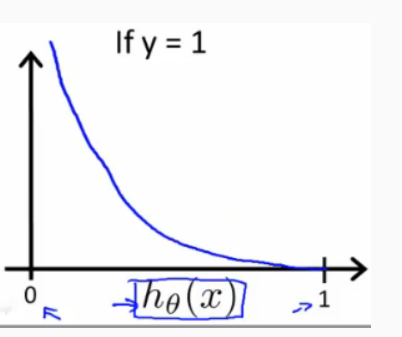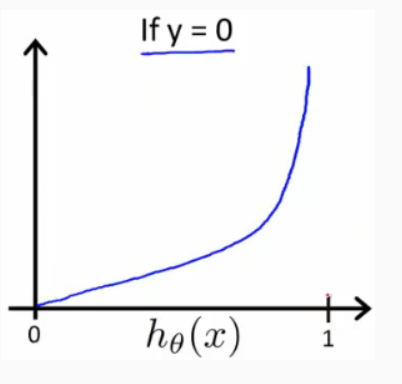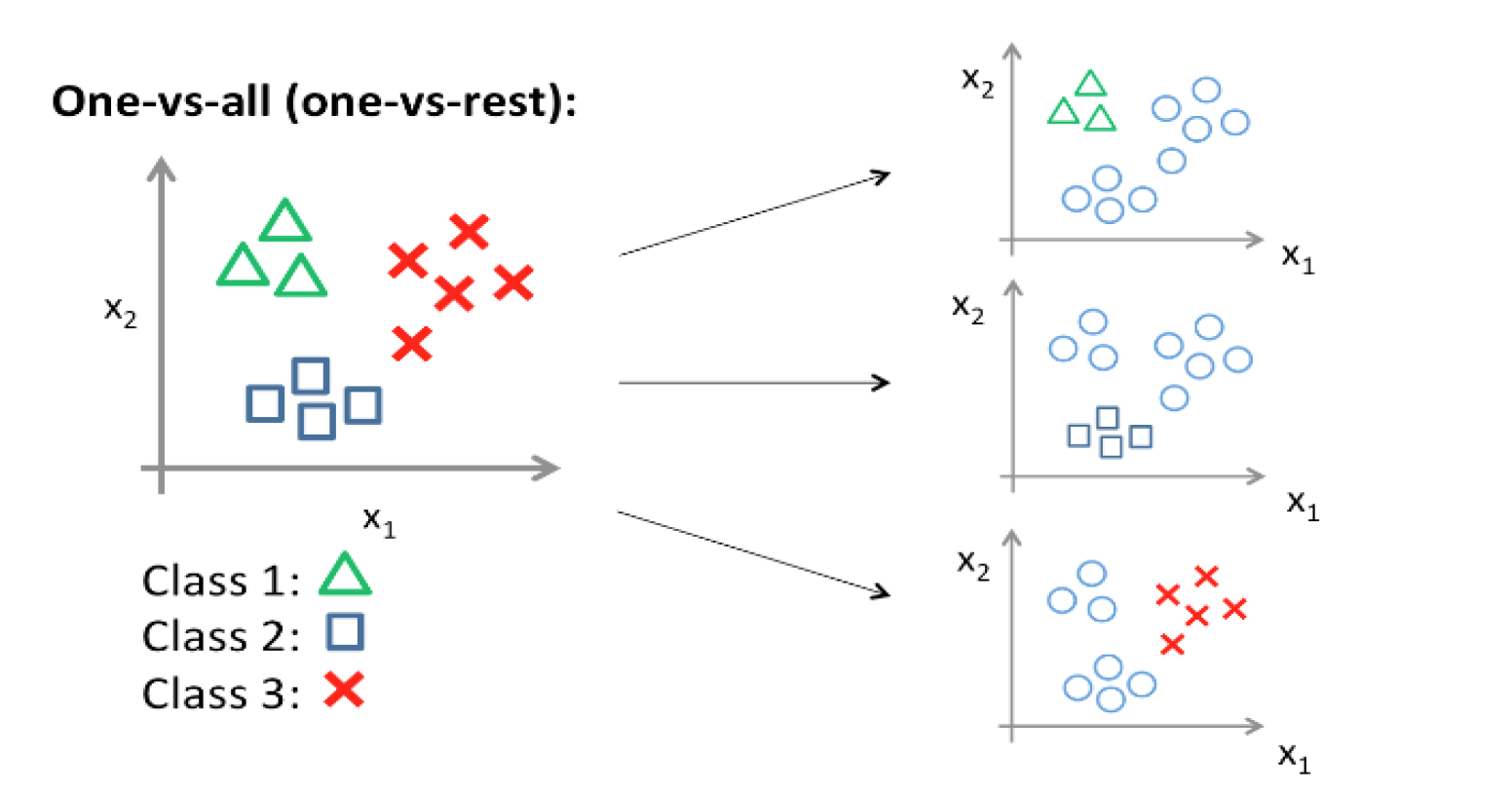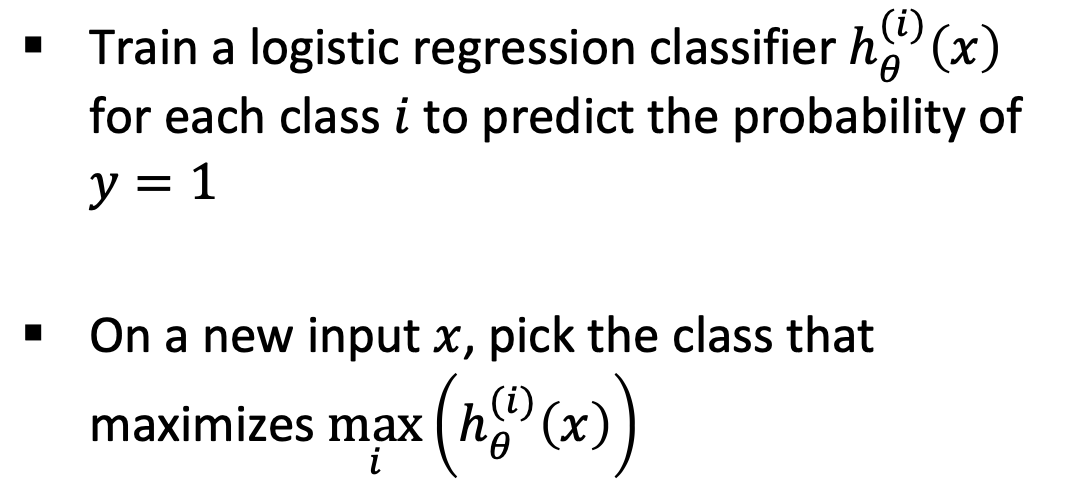Logistic Regression Model 机器学习很像是一个模型对外界的刺激(训练样本)做出反应,趋利避害(评价标准)。
Classification Binary Classification Multi-class Classification 逻辑回归可以用来解决二分类问题 。可以拓展到多分类问题。
提示
回归模型的输出连续的,分类模型的输出是连续的。 严谨的说,逻辑回归不算是回归模型。 什么是逻辑回归 逻辑回归 = 线性回归 + sigmoid函数
从大的类别上来说,逻辑回归是一种有监督 的统计学习方法,主要用于对样本进行分类 。
在线性回归模型中,输出一般是连续的,例如 y = f ( x ) = a x + b y=f(x)=a x+b y = f ( x ) = a x + b
但是对于逻辑回归,输入可以是连续的 [-∞, +∞] ,但输出一般是离散的,即只有有限多个输出值。例如,其值域可以只有两个值 {0, 1} ,这两个值可以表示对样本的某种分类,高/低、患病/健康、阴性/阳性等,这就是最常见的二分类逻辑回归。
1676958067849.png 因此,从整体上来说, 通过逻辑回归模型,我们将在整个实数范围上的x映射到了有限个点上,这样就实现了对x的分类。 因为每次拿过来一个x,经过逻辑回归分析,就可以将它归入某一类y中。
逻辑回归与线性回归的关系 逻辑回归也被称为广义线性回归模型 ,它与线性回归模型的形式基本上相同,都具有 ax+b ,其中 a 和 b 是待求参数,其区别在于他们的因变量不同
多重线性回归直接将 ax+b 作为因变量,即 y = ax+b logistic 回归 则通过 函数S 将 ax+b 对应到一个隐状态 p,p = S(ax+b) ,然后根据 p 与 1-p 的大小决定因变量的值 。这里的函数S就是Sigmoid函数。 S ( t ) = 1 1 + e − t S(t)=\frac{1}{1+e^{-t}} S ( t ) = 1 + e − t 1
将 t 换成 ax+b,可以得到逻辑回归模型的参数形式:
p ( x ; a , b ) = 1 1 + e − ( a x + b ) p(x ; a, b)=\frac{1}{1+e^{-(a x+b)}} p ( x ; a , b ) = 1 + e − ( a x + b ) 1
通用形式是 h θ ( x ) = 1 1 + e − θ T x h_{\theta}(x)=\frac{1}{1+e^{-\theta^{T} x}} h θ ( x ) = 1 + e − θ T x 1
sigmoid函数的图像
S ( x ) = 1 1 + e − x S(x)=\frac{1}{1+e^{-x}} S ( x ) = 1 + e − x 1
通过 函数S 的作用,我们可以将输出的值限制在区间 (0,1) 上。p(x )则可以用来表示概率 p(y=1|x),即当一个 x 发生时,y 被分到1那一组的概率。
其实在真实情况下,我们最终得到的y的值是在 [0, 1] 这个区间上的一个数,然后我们可以选择一个阈值,通常是 0.5,当 y>0.5 时,就将这个 x 归到1这一类,如果 y<0.5 就将 x 归到0这一类。
但是阈值是可以调整的,比如说一个比较保守的人,可能将阈值设为0.9,也就是说有超过90%的把握,才相信这个 x 属于1这一类。
对比逻辑回归与线性回归
Linear Regression: − ∞ < h θ ( x ) < + ∞ , h θ ( x ) = θ 0 x 0 + θ 1 x 1 + ⋯ + θ n x n = θ T x -\infty<h_{\theta}(x)<+\infty, \quad h_{\theta}(x)=\theta_{0} x_{0}+\theta_{1} x_{1}+\cdots+\theta_{n} x_{n}=\theta^{T} x − ∞ < h θ ( x ) < + ∞ , h θ ( x ) = θ 0 x 0 + θ 1 x 1 + ⋯ + θ n x n = θ T x Logistic Regression: 0 ≤ h θ ( x ) ≤ 1 , h θ ( x ) = g ( θ T x ) = 1 1 + e − θ T x 0 \leq h_{\theta}(x) \leq 1, \quad h_{\theta}(x)=g\left(\theta^{T} x\right)=\frac{1}{1+e^{-\theta^{T} x}} 0 ≤ h θ ( x ) ≤ 1 , h θ ( x ) = g ( θ T x ) = 1 + e − θ T x 1 Representation h θ ( x ) h_{\theta}(x) h θ ( x ) probability that 𝑦 = 1 on input 𝑥h θ ( x ) h_{\theta}(x) h θ ( x ) P { y = 0 ∣ x , θ } = 1 − h θ ( x ) P\{y=0 \mid x, \theta\}=1-h_{\theta}(x) P { y = 0 ∣ x , θ } = 1 − h θ ( x ) Decision boundary θ T x = 0 \theta^{T} x=0 θ T x = 0
Example:
Assume: h θ ( x ) = g ( − 3 + x 1 + x 2 ) h_{\theta}(x)=g\left(-3+x_{1}+x_{2}\right) h θ ( x ) = g ( − 3 + x 1 + x 2 ) Decision boundary: − 3 + x 1 + x 2 = 0 -3+x_{1}+x_{2}=0 − 3 + x 1 + x 2 = 0 Predict y = 1 when − 3 + x 1 + x 2 ⩾ 0 -3+x_{1}+x_{2} \geqslant 0 − 3 + x 1 + x 2 ⩾ 0 x 1 + x 2 ⩾ 3 x_{1}+x_{2} \geqslant 3 x 1 + x 2 ⩾ 3 Regression Metrics MSE: Mean Square Error: 1 n ∑ i = 1 n ( y ^ t − y t ) 2 \frac{1}{n} \sum_{i=1}^{n}\left(\hat{y}_{t}-y_{t}\right)^{2} n 1 ∑ i = 1 n ( y ^ t − y t ) 2 MAE: Mean Absolute Error: 1 n ∑ i = 1 n ∣ y ^ t − y t ∣ \frac{1}{n} \sum_{i=1}^{n}\left|\hat{y}_{t}-y_{t}\right| n 1 ∑ i = 1 n ∣ y ^ t − y t ∣ MAPE: Mean Absolute Percentage Error: 100 % n ∑ i = 1 n ∣ y ^ t − y t y t ∣ \frac{100 \%}{n} \sum_{i=1}^{n}\left|\frac{\hat{y}_{t}-y_{t}}{y_{t}}\right| n 100% ∑ i = 1 n y t y ^ t − y t Cost Function 逻辑回归一般使用交叉熵作为代价函数。根据逻辑回归模型的代价函数以及 sigmoid函数
g ( z ) = 1 1 + e − z , h θ ( x ) = g ( θ T x ) g(z)=\frac{1}{1+e^{-z}}, \quad h_{\theta}(x)=g\left(\theta^{T} x\right) g ( z ) = 1 + e − z 1 , h θ ( x ) = g ( θ T x )
对一个样本的cost,有 Cost ( h θ ( x ) , y ) = { − log ( h θ ( x ) ) y = 1 − log ( 1 − h θ ( x ) ) y = 0 \operatorname{Cost}\left(h_{\theta}(x), y\right)=\left\{\begin{array}{cc} -\log \left(h_{\theta}(x)\right) & y=1 \\ -\log \left(1-h_{\theta}(x)\right) & y=0 \end{array}\right. Cost ( h θ ( x ) , y ) = { − log ( h θ ( x ) ) − log ( 1 − h θ ( x ) ) y = 1 y = 0 整体的 Cost Function 为 J ( θ ) = 1 m ∑ i = 1 m Cost ( h θ ( x ( i ) ) , y ( i ) ) J(\theta)=\frac{1}{m} \sum_{i=1}^{m} \operatorname{Cost}\left(h_{\theta}\left(x^{(i)}\right), y^{(i)}\right) J ( θ ) = m 1 ∑ i = 1 m Cost ( h θ ( x ( i ) ) , y ( i ) ) 这样做是为了 Heavy Penalty , 即
注:只观察 [0,1] 区间
Cost Function:
Cost ( h θ ( x ) , y ) = − y log h θ ( x ) − ( 1 − y ) log ( 1 − h θ ( x ) ) \operatorname{Cost}\left(h_{\theta}(x), y\right)=-y \log h_{\theta}(x)-(1-y) \log \left(1-h_{\theta}(x)\right) Cost ( h θ ( x ) , y ) = − y log h θ ( x ) − ( 1 − y ) log ( 1 − h θ ( x ) )
化简之后为
J ( θ ) = − 1 m [ ∑ i = 1 m ( y ( i ) log h θ ( x ( i ) ) + ( 1 − y ( i ) ) log ( 1 − h θ ( x ( i ) ) ) ] J(\theta)=-\frac{1}{m}\left[\sum_{i=1}^{m}\left(y^{(i)} \log h_{\theta}\left(x^{(i)}\right)+\left(1-y^{(i)}\right) \log \left(1-h_{\theta}\left(x^{(i)}\right)\right)\right]\right. J ( θ ) = − m 1 [ i = 1 ∑ m ( y ( i ) log h θ ( x ( i ) ) + ( 1 − y ( i ) ) log ( 1 − h θ ( x ( i ) ) ) ]
训练样本的个数; hθ (x):用参数θ和x预测出来的y值; y:原训练样本中的y值,也就是标准答案 上角标(i):第i个样本 x ( i ) x^{(i)} x ( i )
∂ J ( θ 0 , θ 1 , ⋯ ) ∂ θ j = 1 m ∑ i = 1 m ( h θ ( x ( i ) ) − y ( i ) ) x j ( i ) \frac{\partial J\left(\theta_{0}, \theta_{1}, \cdots\right)}{\partial \theta_{j}}=\frac{1}{m} \sum_{i=1}^{m}\left(h_{\theta}\left(x^{(i)}\right)-y^{(i)}\right) x_{j}^{(i)} ∂ θ j ∂ J ( θ 0 , θ 1 , ⋯ ) = m 1 i = 1 ∑ m ( h θ ( x ( i ) ) − y ( i ) ) x j ( i )
和线性回归一样,
θ j = θ j − α ∂ J ( θ 0 , θ 1 , ⋯ ) ∂ θ j \theta_{j}=\theta_{j}-\alpha \frac{\partial J\left(\theta_{0}, \theta_{1}, \cdots\right)}{\partial \theta_{j}} θ j = θ j − α ∂ θ j ∂ J ( θ 0 , θ 1 , ⋯ )
带有正则化的代价函数
J ( θ ) = − 1 m ∑ i = 1 m [ y ( i ) log ( h θ ( x ( i ) ) ) + ( 1 − y ( i ) ) log ( 1 − h θ ( x ( i ) ) ) ] + λ 2 m ∑ j = 1 n θ j 2 J(\theta)=-\frac{1}{m} \sum_{i=1}^{m}\left[y^{(i)} \log \left(h_{\theta}\left(x^{(i)}\right)\right)+\left(1-y^{(i)}\right) \log \left(1-h_{\theta}\left(x^{(i)}\right)\right)\right]+\frac{\lambda}{2 m} \sum_{j=1}^{n} \theta_{j}^{2} J ( θ ) = − m 1 i = 1 ∑ m [ y ( i ) log ( h θ ( x ( i ) ) ) + ( 1 − y ( i ) ) log ( 1 − h θ ( x ( i ) ) ) ] + 2 m λ j = 1 ∑ n θ j 2
为何逻辑回归要重新定义代价函数 如果在逻辑回归中使用 cost function: J ( θ ) = 1 m ∑ i = 1 m 1 2 ( h θ ( x ( i ) ) − y ( i ) ) 2 J(\theta)=\frac{1}{m} \sum_{i=1}^{m} \frac{1}{2}\left(h_{\theta}\left(x^{(i)}\right)-y^{(i)}\right)^{2} J ( θ ) = m 1 ∑ i = 1 m 2 1 ( h θ ( x ( i ) ) − y ( i ) ) 2
1657472131550.png 这是一个非凸函数,有多个局部最优解,运用梯度下降算法并不会收敛到它的全局最优解。因此我们需要重新定义代价函数。
当 y = 1 时,Cost(hθ (x), y) 函数的图像是
当 y = 0时,Cost(hθ (x), y) 函数的图像是
预测正确,那么它的代价值就为 0 预测错误,那么这个代价就是无穷大的 Multi-class Classification 1675263154245.png 在 One-vs-all (one-vs-rest) 方法中,为每个类别训练一个二元分类器,将该类别与所有其他类别区分开来。
例如,假设有三个类,A、B、C。在这种情况下,我们将训练三个二元分类器:一个用于A类与其他类的对比,一个用于B类与其他类的对比,一个用于C类与其他类的对比。
import numpy as np
from sklearn. linear_model import LogisticRegression
X = np. array( [ [ 1 , 2 ] , [ 2 , 3 ] , [ 3 , 4 ] , [ 4 , 5 ] , [ 5 , 6 ] , [ 6 , 7 ] ] )
y = np. array( [ 0 , 1 , 2 , 1 , 0 , 2 ] )
classifiers = [ ]
for i in range ( 3 ) :
y_binary = ( y == i) . astype( int )
clf = LogisticRegression( )
clf. fit( X, y_binary)
classifiers. append( clf)
new_instance = np. array( [ [ 2.5 , 3.5 ] ] )
scores = [ clf. predict_proba( new_instance) [ 0 ] [ 1 ] for clf in classifiers]
predicted_class = np. argmax( scores)
print ( "Predicted class:" , predicted_class)

